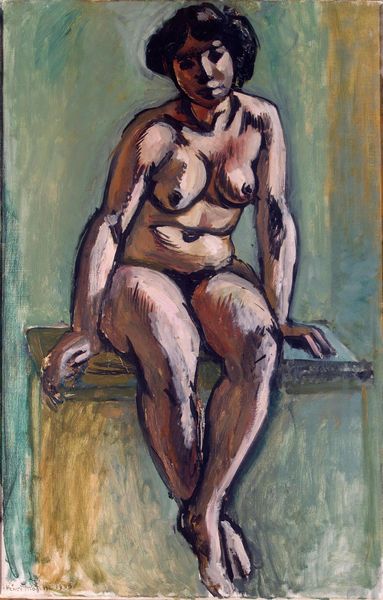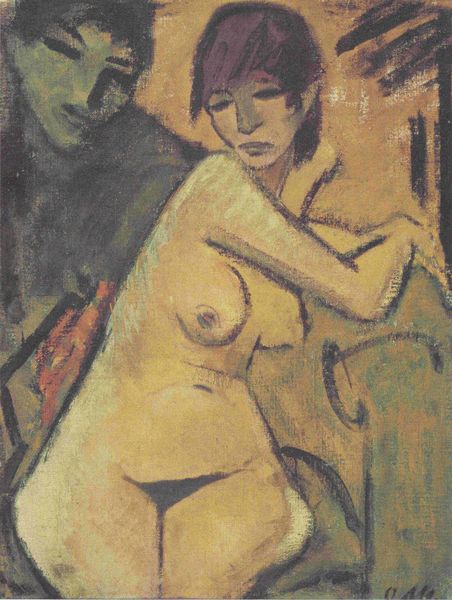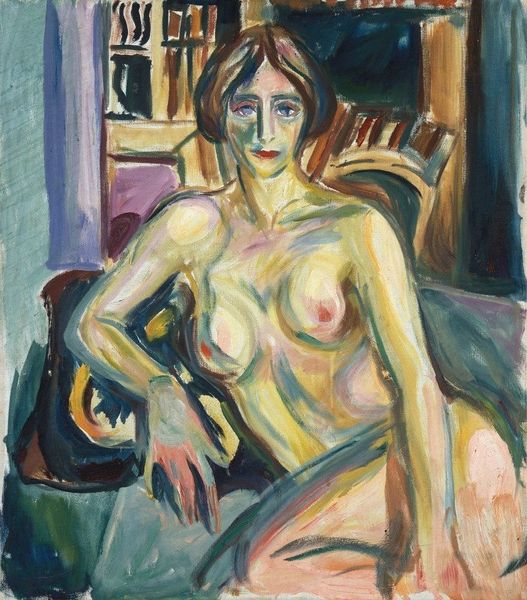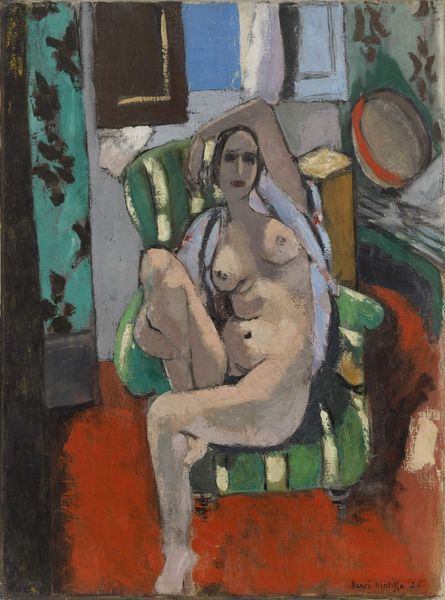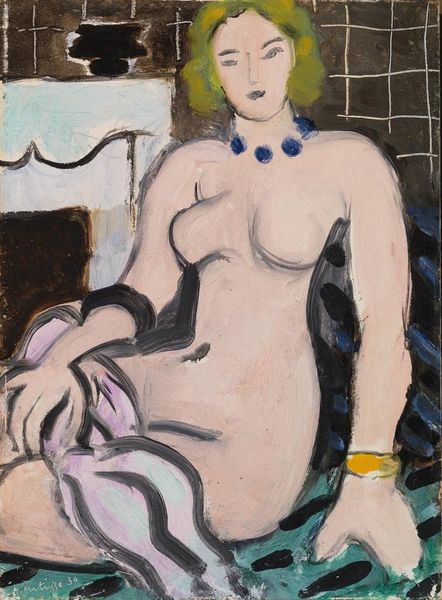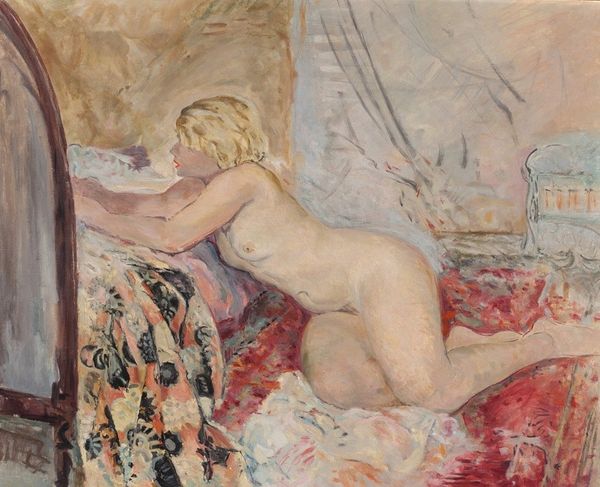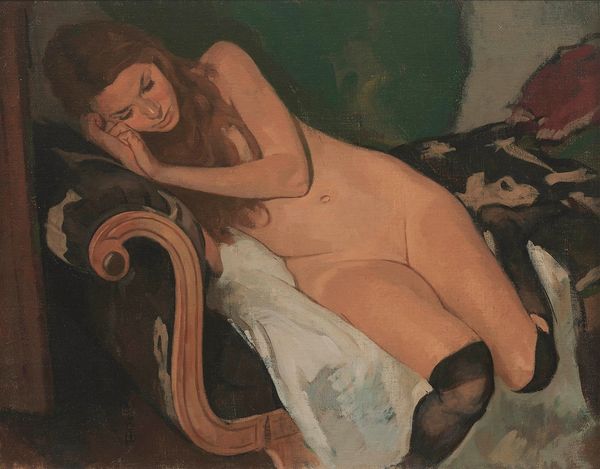
Copyright: Modern Artists: Artvee
Curator: Welcome. Here we have Henri Matisse’s 1927 oil on canvas, "Nu Assis," or "Seated Nude." Editor: There's a palpable sense of quietude here. The red patterns in the carpet and the background are lovely, but there’s something inherently unsettling about how passive the subject appears. Curator: Yes, this work fits squarely into a fascinating period of Matisse's career, between his Nice period and the later paper cut-outs. He’s clearly influenced by Impressionism and Fauvism here, looking back while also subtly pushing his established boundaries of intimism. Consider how the model's form seems both present and abstracted. Editor: It's more than abstraction; the representation of the nude is loaded. There’s this lingering gaze associated with the nude in art, especially female nudes painted by male artists. I think it’s impossible to ignore questions about power dynamics in this piece. Whose gaze is this meant for, and who profits from it? Curator: Well, at this stage in his career, Matisse was deeply concerned with the formal qualities of painting - light, color, line - and how they interact within the domestic interior. He repeatedly explored the seated figure; I’d argue that the “gaze” is primarily focused inward, an exploration of form. He’s investigating, essentially, how paint translates visual experience. Editor: Perhaps, but dismissing the social and political dimensions seems naïve. Think about the tradition of nudes within the Western art canon and how it shapes our perception, right up to contemporary power structures. It’s an intersectional conversation worth having in any gallery. Curator: Certainly. This composition invites us to delve into these challenging but vital discussions. Editor: It reminds me to think critically not just about art, but about the world around us, and that can only be a good thing.
Comments
No comments
Be the first to comment and join the conversation on the ultimate creative platform.
